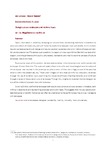Shenzhen’s Urban Villages: Dialogic cultural landscapes and resilient rituals
| dc.contributor.author | Latham, Zoe | |
| dc.contributor.author | Brown, Robert | |
| dc.contributor.editor | Smith M | |
| dc.contributor.editor | Megyesi B | |
| dc.date.accessioned | 2019-01-12T10:06:32Z | |
| dc.date.issued | 2018-12-19 | |
| dc.identifier.issn | 2063-0468 | |
| dc.identifier.issn | 2063-0468 | |
| dc.identifier.uri | http://hdl.handle.net/10026.1/13123 | |
| dc.description.abstract |
Rapid urbanisation is drastically reshaping our environment, destabilising traditional connections to place and notions of community, and with these the relationship between place and identity. In this context, how do we make sense of such change and how do we orient ourselves when prior notions of place and iden- tity are disrupted or lost? To address such questions this paper will draw upon Mikhail Bakhtin’s concept of di- alogism, and through themes of mutuality, simultaneity, malleability and mobility examine concepts of cultural landscape, nature and ritual. To pursue our study of this condition we have sited ourselves in the dramatically and rapidly transformed landscape of urban Shenzhen. The scale and speed of economic shifts and morphological transformations of the landscape have resulted in the contemporary phenomenon of the urban village, a trace of the past that remains within the present day city. These urban villages will be a focal point for our discussion, advanced through the use of narrative inquiry examining the viewpoints of those inhabiting Shenzhen, and reinforced through a review of discourse on cultural landscape. Through this, insights are revealed into the dialogical na- ture of the relationship people have with landscape. Exploring further, we find that landscape both as a physical construct and as a concept is malleable, both shifting in response to and representing social aspirations and needs. This suggests that the way people orien- tate themselves or identify themselves can often be understood by the performances they pursue in engaging with landscape. | |
| dc.format.extent | 51-71 | |
| dc.language.iso | en | |
| dc.publisher | Socio.hu | |
| dc.subject | Cultural landscape | |
| dc.subject | Dialogical | |
| dc.subject | Malleability | |
| dc.subject | Mobility | |
| dc.subject | Mutuality | |
| dc.subject | Ritual | |
| dc.subject | Simultaneity | |
| dc.title | Shenzhen’s Urban Villages: Dialogic cultural landscapes and resilient rituals | |
| dc.type | journal-article | |
| plymouth.issue | Special Issue No. 6 | |
| plymouth.publication-status | Published online | |
| plymouth.journal | Socio.hu Social Science Review | |
| dc.identifier.doi | 10.18030/socio.hu.2018en.51 | |
| plymouth.organisational-group | /Plymouth | |
| plymouth.organisational-group | /Plymouth/Faculty of Arts, Humanities and Business | |
| plymouth.organisational-group | /Plymouth/REF 2021 Researchers by UoA | |
| plymouth.organisational-group | /Plymouth/REF 2021 Researchers by UoA/UoA13 Architecture, Built Environment and Planning | |
| plymouth.organisational-group | /Plymouth/Users by role | |
| plymouth.organisational-group | /Plymouth/Users by role/Academics | |
| dcterms.dateAccepted | 2018-12-18 | |
| dc.rights.embargodate | 2019-4-19 | |
| dc.identifier.eissn | 2063-0468 | |
| dc.rights.embargoperiod | Not known | |
| rioxxterms.versionofrecord | 10.18030/socio.hu.2018en.51 | |
| rioxxterms.licenseref.uri | http://www.rioxx.net/licenses/all-rights-reserved | |
| rioxxterms.licenseref.startdate | 2018-12-19 | |
| rioxxterms.type | Journal Article/Review |


